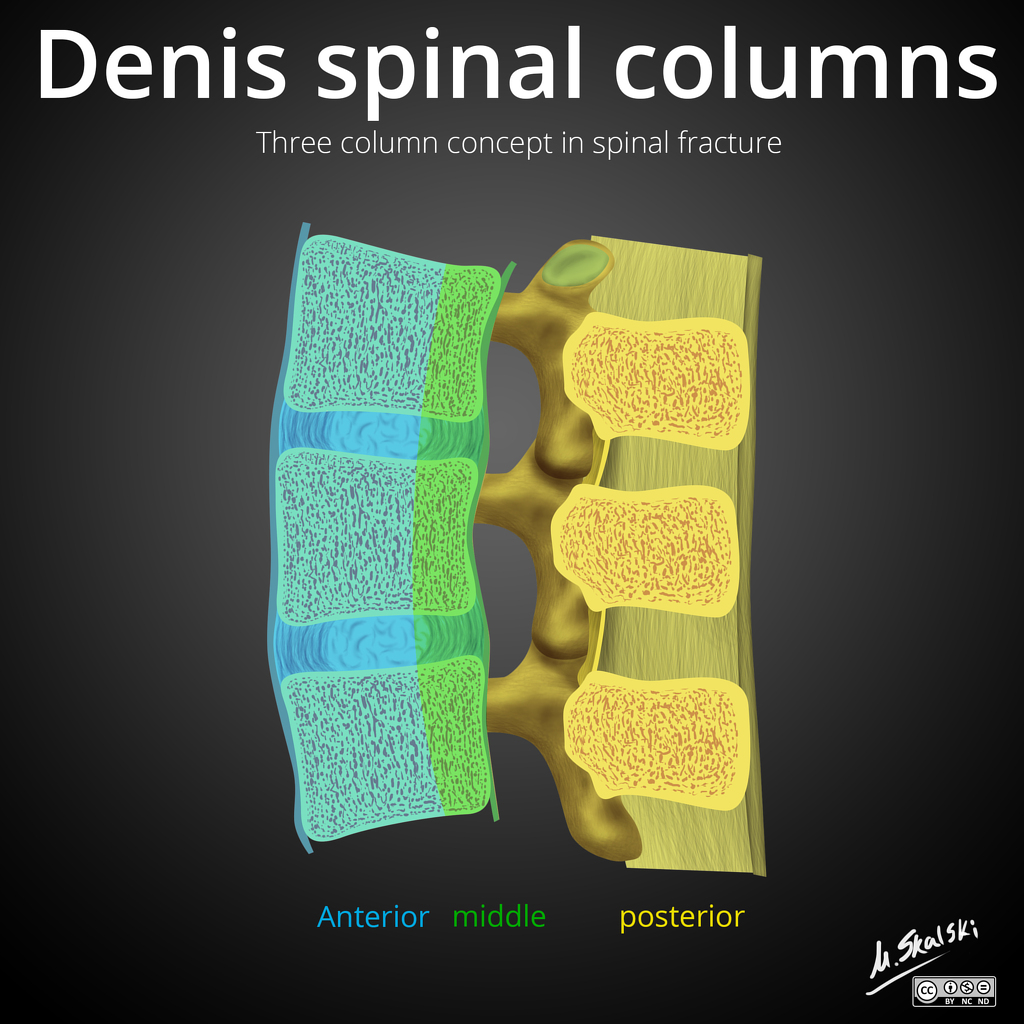SPINE-TRAUMA, THREE COLUMN CONCEPT
SUMMARY
Francis Denis divided the thoraco-lumbar vertebral column into three vertical parallel columns based on biomechanical studies related to stability post traumatic injury. Instability occurs when injuries affect two contiguous columns (i.e. anterior and middle column or middle and posterior column).
The three columns are:
1. Anterior column: ALL, anterior 2/3 of the vertebral body & anterior 2/3 of the intervertebral disc (annulus fibrosus)
2. Middle column: posterior 1/3 of the vertebral body, posterior 1/3 of the intervertebral disc (annulus fibrosus) & PLL
3. Posterior column: everything posterior to the PLL (pedicles, facet joints & articular processes, ligamentum flavum, neural arch and interconnecting ligaments)

Image: Case courtesy of Matt Skalski, Radiopaedia.org. From the case rID: 32621.
Reference(s)
R.M.H McMinn (1998). Last’s anatomy: regional and applied. Edinburgh: Churchill Livingstone. Get it on Amazon.
Drake, Richard L., et al. Gray's Anatomy for Students. Elsevier, 2023. Get it on Amazon.